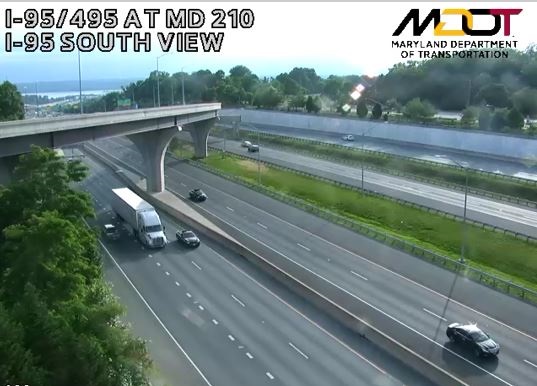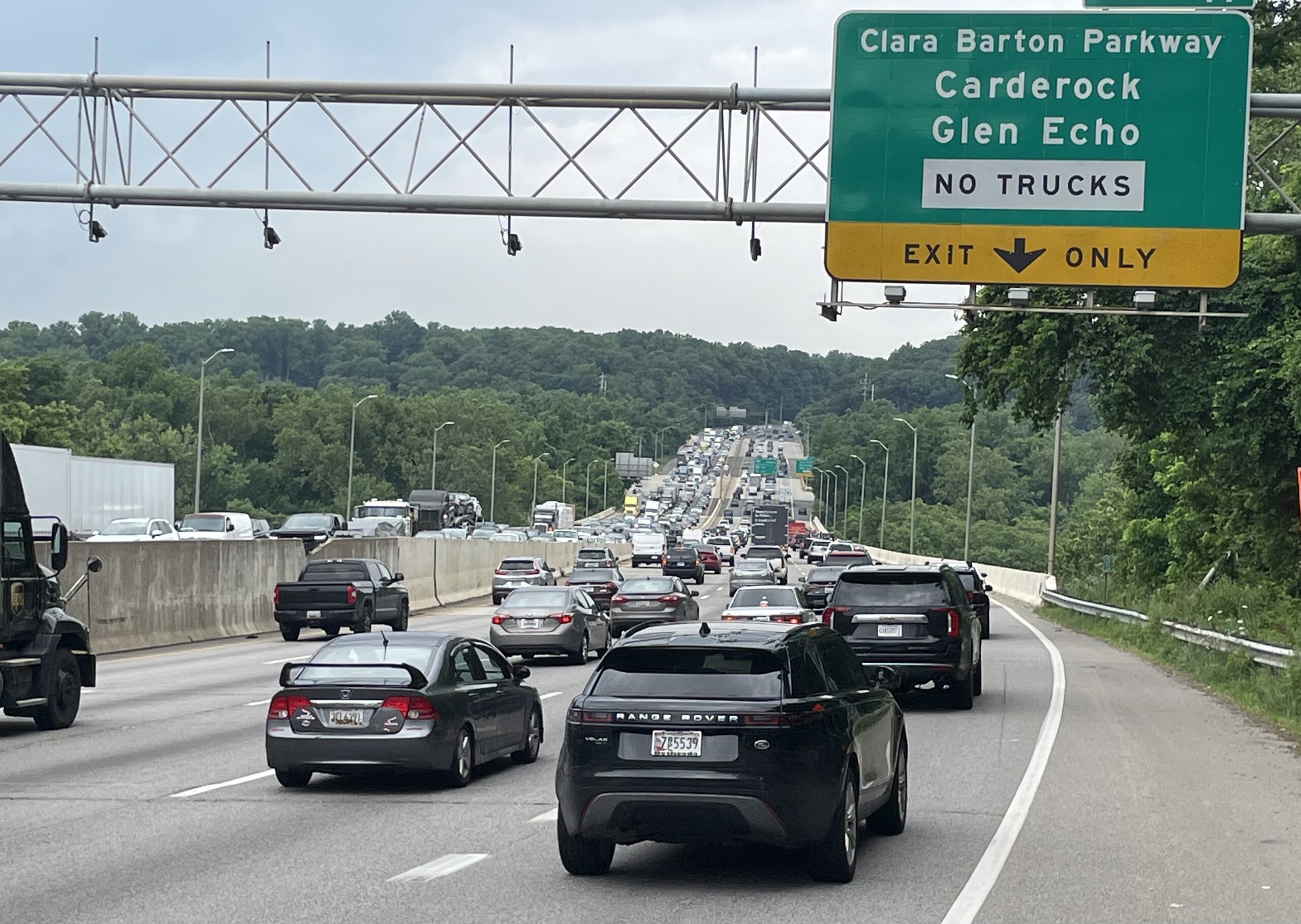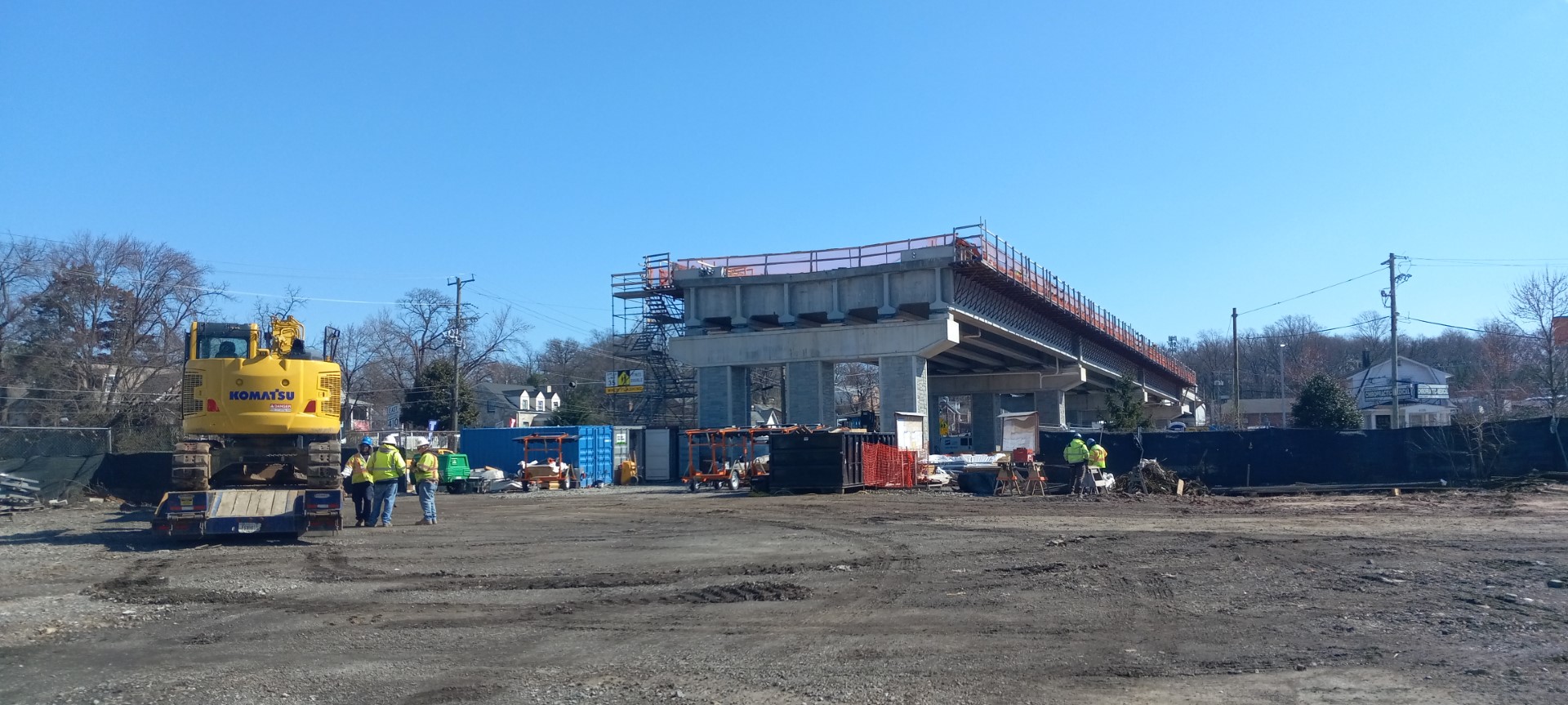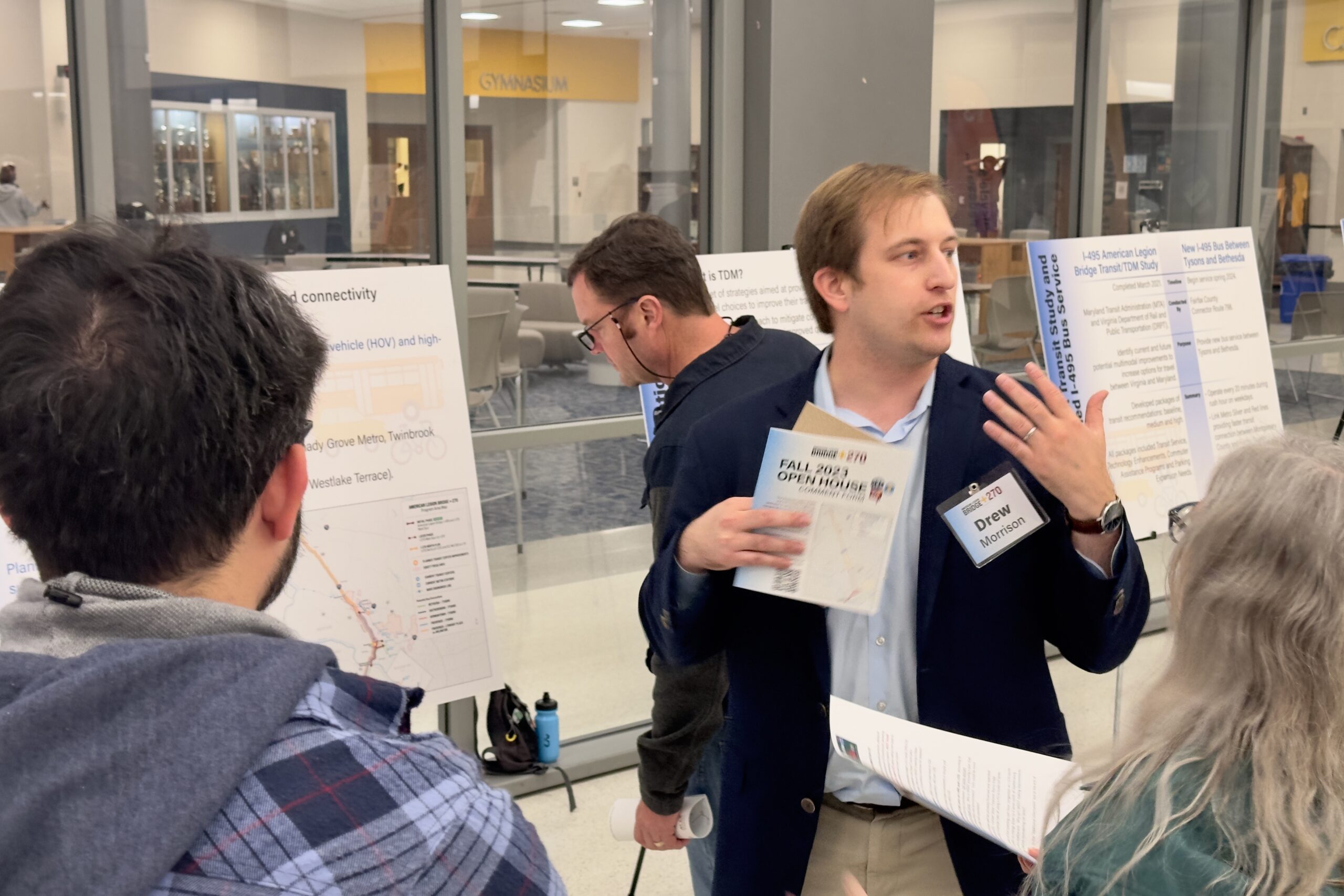Prince George’s Planner Faults State on Highway P3

State Highway Administration officials working on the expansion of the Capital Beltway through Prince George’s County lack an understanding of the county’s economic future and have not been forthcoming with information, a top planner told the County Council on Monday.
“They didn’t really seem to know very much about what was going on” in Prince George’s County, said Debra Borden, principal counsel for the Maryland-National Capital Park and Planning Commission, in describing her interactions with officials involved in the design of new express toll lanes.
Borden made her comments during a during a 75-minute briefing for the 11-member panel of lawmakers.
She stressed that her agency’s role is largely technical and that the park and planning board does not have veto power over the Hogan administration’s plans to widen the Beltway two lanes in each direction. Nevertheless, her testimony appeared to reinforce concerns and objections that the panel, made up entirely of Democrats, has already expressed.
Gov. Lawrence J. Hogan Jr. (R) unveiled plans in 2017 to widen the Beltway and Interstate 270 two lanes in each direction, using a process where private firms finance, build and maintain the new capacity in exchange for the ability to charge tolls of varying amounts for the next 50 or more years. Existing lanes would remain free of charge.
Last week, the commission rejected, on a 9-1 vote, the alternatives retained for detailed study, or ARDS, that the state has proposed, setting up future dialogue with the state through the Federal Highway Administration.
Borden took issue with a host of decisions made by state highway officials, and she said that requests for information repeatedly went unanswered.
–Borden called it “strange” that the state’s study area extends from Frederick County through Montgomery and into Prince George’s, ending at a point on the Beltway south of Maryland Route 5, the exit for Branch Avenue.
“Our study does not go all the way to the Woodrow Wilson Bridge. That is a major issue for us,” she said. “It appears to be a strange place to stop the study area. It’s not at an exit, it’s not at an interchange.”
SHA officials working with Prince George’s and Montgomery counties have told local planners that they want the Virginia Department of Transportation to take the lead on planning the approach to the bridge, because of the complicated configuration of local and thru lanes.
“We have raised the alarm about it because it’s rather alarming to us,” Borden said. “This is a very sensitive area. It’s right where you would access MGM and National Harbor. This is an economic engine not just for Prince George’s County but for the state, and the lack of detail, the lack of information, is very concerning to us.”
–Borden faulted the state regarding transit.
The Woodrow Wilson Bridge was built to accommodate the addition of Metrorail, so that the Washington Metropolitan Area Transit Authority could one day connect the Yellow Line in Alexandria, Va., with the Green Line in Prince George’s.
With Amazon building its second headquarters in Crystal City, Va., many county leaders are eager to see commuter rail extend across the Potomac River.
“It needs to be coordinated, and it needs to be planned,” Borden told the panel. “We can’t have a situation where it’s not functional for 20 years. That’s not acceptable.”
–Prince George’s County and the University of Maryland Medical System are building a new critical-care hospital in Largo, envisioned to be one of the largest in the state and a key component of what local officials call Downtown Largo.
But Borden said her colleagues were alarmed to find no plan for motorists using new express toll lanes to be able to exit near the new hospital.
“We thought that was a very strange thing to omit, particularly since there is more than just the hospital going in at that location,” Borden testified. “There was nothing. There was just no access and no real discussion of that area.”
“That was a major concern when we did our staff letter,” she said.
Borden said her team recently met again with state planners to reiterate their concerns and “we’re hoping we’ll get some movement on that.”
Borden also expressed concern about how the state will design express toll lanes near the interchanges at MD 450 and Route 50, two important east-west roads, and how expanded lanes will connect, if at all, at Route 1 near the University of Maryland. She also expressed the fear that the state will end up taking more park land for on- and off-ramps than is currently being suggested.
“We have that concern because we’re the planning agency. We have the maps, too, and we know where our property is,” she said.
Although she cast the role of M-NCPPC’s role as largely technical — focused more on how the lanes get built than whether they get built — she appeared to undercut the state’s central argument for building additional road capacity to ease the worst-in-the-nation traffic tie-ups that motorists face each day.
“Adding lanes doesn’t generally solve your problem if you have too many cars on the road,” she said. “We need to make sure that public transit is a part of this process. … When you’re looking at managed lanes or toll lanes, you always want to look at how do we also reduce the number of cars on the road.”
Asked about plans to connect express toll lanes to the Purple Line, which is now under construction, Borden said she has heard the same talk, but the state has provided nothing concrete.
“I’ve heard those statements made. We have received no actual information. … Nothing that we can analyze,” she said. “We’ve got nothing on that.”
Prince George’s County Councilmember Danielle Glaros (D) was among the officials who expressed skepticism about the state’s plans.
“I just don’t think this is ready for prime time,” she said.
A spokeswoman for MDOT, Erin Henson, pushed back against the suggestion that the state isn’t taking the county’s priorities into consideration.
“MDOT is very familiar with Prince George’s County’s needs,” she said in an email to Maryland Matters. “County officials and the hospital development team have reached out directly to MDOT SHA Administrator Greg Slater to coordinate transportation needs to get people to the new hospital. Administrator Slater has MDOT SHA’s planning team and I-495 & I-270 Program team working with the County on transportation solutions for the hospital.”
Borden concluded her remarks by noting that the Federal Highway Administration is operating under an executive order requiring that all National Environmental Policy Act programs like Maryland’s be completed in two years, meaning it has to be done by March 2020.
She called that a “very unusual and very tight timeframe.”
“These are not normal times,” she said. “I don’t know how they’re going to get this finished in two years. I have no idea.”
Did someone forward this to you?
Get your own daily morning news roundup in your inbox. Free. Sign up here.




 Creative Commons Attribution
Creative Commons Attribution